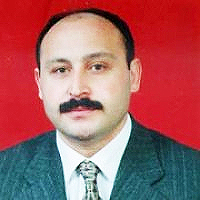Physiotherapy Undergraduate Students’ Perception About Clinical Education; A Qualitative Study
Published on: 22nd November, 2024
Background: Clinical education is an important component of physiotherapy education programs. It provides insights to the students in the fields of physiotherapy practice, develops leadership, and enhances their clinical skills in patient assessment, examination, diagnosis, treatment, planning, and intervention selection. The dimension of physiotherapy education is in the developing phase in Nepal. For further growth, the experience and the perception of the students are very important. Through this, the facilitators and barriers in physiotherapy clinical education need to be recognized. Therefore, this study aimed to explore the facilitators and barriers in physiotherapy clinical education in Nepal from a student’s perspective.Objectives: The main objective of this study was to identify the perception of physiotherapy undergraduate students about their clinical education and to find out the facilitators and barriers in clinical education.Methods: A qualitative research using focused group discussion was conducted. Ethical considerations were taken from respective departments and IRC approval was taken. BPT 3rd year, 4th year, and intern students of KUSMS were called to participate in the study. After the consent from the participants, focus groups of 6 participants (2 participants from each 3rd year, 4th year, and intern) were formed. In five FGDs, data saturation was observed and no further FGDs were conducted. FGDs were collected with audio tape recordings. The data were transcribed verbatim and translated into the English language. Then data coding was done and themes and sub-themes were generated from the codes.Results: Through the transcribed and translated data, seven themes were generated which were clinical education, student expectation, student attitude and behavior, roles and responsibilities of clinical educators, exposure, resources, and miscellaneous. These headings explained the perception of facilitators and barriers.Conclusion: The facilitators and barriers to physiotherapy clinical education were identified through student’s perspectives. These findings should be considered while preparing the guiding document for clinical education to enhance the quality of education.
Efficiency of Artificial Intelligence for Interpretation of Chest Radiograms in the Republic of Tajikistan
Published on: 25th November, 2024
The article presents data from recent publications and own data on screening studies with interpretation of chest radiographs using artificial intelligence CAD (Computer-Assisted Diagnosis), which, according to WHO recommendations, provides more accurate clinical thresholds for deciding who needs to take a sputum test. Another aspect of the WHO recommendations is the cost-effectiveness of CAD as a tool for triaging patients with tuberculosis symptoms in low-income countries with a high incidence of tuberculosis. Compared with smear microscopy and GeneXpert, without preliminary sorting, the use of mobile digital X-ray machines equipped with a CAD tool reduces costs, allowing sorting of individuals suspected of having tuberculosis for testing on GeneXpert, while reducing the time to start tuberculosis treatment.Thus, conducting a study using portable X-ray machines using a CAD program is a low-cost and easy-to-implement method, does not require large funds, does not require separate rooms, is highly effective, has good image quality, allows you to quickly clarify individuals suspected of having tuberculosis, differentiating it from other pathological changes in the lungs.Our experience shows that machine analysis of chest computed tomography data, due to the higher resolution capabilities of the method and the absence of fundamental disadvantages of radiography, including the effect of shadow summation, the presence of “blind” zones, etc., is finding increasing application in both diagnostics and screening of respiratory diseases. Our use of this tool allowed us to identify additional new cases of phthisio-onco-pulmonary diseases in field conditions.
Sexual Dimorphism in the Length of the Corpus Callosum in Cadaver
Published on: 5th December, 2024
Context: Several texts and literature suggest that corpus callosum may be sexually dimorphic. Previous researchers found that the length of the corpus callosum is larger in males than in females. Reviewing various foreign literature found that the length of the corpus callosum may change in many diseases in Neurology, Neurosurgery, and Psychiatry. So, knowledge of the normal morphological difference of the length of corpus callosum between Bangladeshi males and females is essential for the diagnosis in brain imaging and treatment of those diseases. Objective: The present study was conducted to provide data on the length of the corpus callosum of our people, which can be used to set a standard measurement for the Bangladeshi population. Materials and methods: A cross-sectional, descriptive study was done in the Department of Anatomy, Dhaka Medical College, Dhaka, Bangladesh, from July 2009 to June 2010, based on the collection of 60 human brains (male 36 and female 24) from unclaimed dead bodies. The lengths were measured by using digital slide calipers in mm.Results: The mean length of the corpus callosum in males and females in groups A, B, C & D (grouping in done on age difference) were 68.04 ± 0.99 and 67.03 ± 0.05 mm, 67.50 ± 0.13 and 67.02 ± 0.03 mm and 67.51 ± 0.03 and 67.02 ± 0.03 mm respectively.Conclusion: Statistically significant differences were found between males and females in all age groups in the length of the corpus callosum.
Clinical Severity of Sickle Cell Anaemia in Children in the Gambia: A Cross-Sectional Study
Published on: 8th January, 2025
Background: Sickle cell anaemia (SCA) in children demonstrates a broad range of clinical manifestations and serious complications. Assessment of disease severity in specific populations is necessary to plan services and optimise care. Aim: To describe the clinical severity of SCA and associated sociodemographic and clinical factors in children in Gambia.Methods: The presence of lifetime complications was confirmed by history and review of medical charts. We determined clinical severity using a validated scoring system and related the severity to sociodemographic and clinical factors.Results: In 130 study participants, ages ranged from 5 to 15 years with a mean (SD) age of 9.74 (2.81) years. Eleven (8.5%) children had had acute chest syndrome, 7 (5.4%) avascular necrosis of the femoral head, 6 (4.6%) gallstones, 5 (3.8%) stroke and 1 (0.8%) priapism over their lifetime. Disease severity was classified as mild in 108 (83.1%) children, moderate in 17 (13.1%) and severe in 5 (3.8%). Age, age at diagnosis, sex, ethnicity, social class, and treatment with hydroxyurea was not significantly correlated with SCA clinical severity (P values 0.10-0.84).Conclusion: The high proportion of children with mild disease may be due to the high prevalence of Senegalese β-haemoglobin haplotype in the Senegambia subregion. However, the presence of moderate or severe disease in almost 1 in 5 children calls for concerted efforts in SCD care in this region.
The Need of Wider and Deeper Skin Biopsy in Verrucous Carcinoma of the Sole
Published on: 31st January, 2025
Verrucous carcinoma is a rare, slow-growing squamous cell carcinoma that can occur in acral regions, including the plantar surface, being named carcinoma cuniculatum. The tumor presents as a well-demarcated, exudative lesion, resembling benign conditions like warts or infections. In this case, a verrucous lesion on the left plantar surface initially appeared to be non-malignant, with multiple incisional biopsies showing only inflammation. A final excisional biopsy of a large part of it confirmed the initial suspicion of malignancy, prompting complete excision and appropriate management. This case underscores the importance of performing wide and deep biopsies for early diagnosis and timely treatment of a suspected verrucous carcinoma.
Unveiling the Impostor: Pulmonary Embolism Presenting as Pneumonia: A Case Report and Literature Review
Published on: 5th February, 2025
Pulmonary Embolism (PE) can present with symptoms resembling pneumonia, creating a diagnostic challenge, particularly in patients with comorbidities. We report the case of a 67-year-old male who presented with cough, hemoptysis, shortness of breath, fever, and pedal edema. Initially diagnosed with consolidation based on chest X-ray findings, he was treated with antibiotics. However, persistent symptoms prompted further evaluation, leading to the diagnosis of PE with pulmonary infarction and deep vein thrombosis on computed tomography pulmonary angiography and Doppler ultrasound. This case highlights the need to consider PE in the differential diagnosis of consolidation, particularly in high-risk individuals, to avoid delays in appropriate management.
Hepatic Angiomyolipoma Mimicking Hepatocellular Carcinoma: Another Rare Case Report
Published on: 11th February, 2025
Epithelioid angiomyolipomas (AML) are uncommon mesenchymal neoplasms, belonging to the group of perivascular epithelioid cell neoplasms (PECOMA). Hepatic PECOMA is even rarer. It’s difficult to diagnose in preoperative by imaging, especially when the fatty component is scant or absent. The gold standard for the diagnosis is histologic examination coupled with an immunohistochemical study. Positive HMB45 immunostaining of the myoid cells is a major diagnostic feature. Herein, we report a particular case of hepatic angiomyolipoma in a middle-aged woman with no significant medical past history. The preoperative diagnosis was difficult given the absence of specific clinical manifestations, even the radiologists considered high suspicion of hepatocellular carcinoma. The final diagnosis has been made by post-operative histology coupled with an immunohistochemistry study.
Pneumothorax as Complication of CT Guided Lung Biopsy: Frequency, Severity and Assessment of Risk Factors
Published on: 12th February, 2025
Background: CT-guided lung biopsy is routinely performed minimally invasive procedure. Imaging findings in the lung can have a broad differential diagnosis; therefore, it is indicated for definitive determination of pulmonary nodules or masses. Post-biopsy complications are common with most of them manageable in daycare. As pneumothorax is the most common complication, frequency and severity of pneumothorax with assessment of risk factors and follow-up for resolution is necessary.Methods: A prospective evaluation of 123 biopsies with automated coaxial biopsy of 18 gauge was done. Post-biopsy pneumothorax was evaluated for its incidence and resolution. The studied risk factors were; patient age, sex, lesion location, lesion size, shortest pleural lesion depth, traversed lung parenchymal distance, presence of emphysema, fissure penetration, needle thoracic wall angle, and lesion characteristics.Results: Reported immediate post-procedural pneumothorax was 22% with 19% of mild, 4% of moderate and 2.4% of severe cases. 51.9% of cases showed resolution within 24 hours. The intervention was required in only 4.8% of biopsy cases. A significant p - value of pneumothorax with the nodule depth increased traversed lung parenchymal distance, acute needle angle, fissure puncture, and presence of emphysema was seen. Emphysema was an independent variable in pneumothorax in multivariate analysis.Conclusion: Pneumothorax is an unamenable consequence of CT-guided lung biopsy and a cautious approach should be kept in view of the variables that are associated with it to reduce its incidence and severity in patients.
Septic Shock on Bartholinitis: Case Report and Modern Surgical Approaches
Published on: 7th March, 2025
Bartholinitis, or Bartholin's gland abscess, is a relatively common gynecological condition among women of reproductive age. Its annual incidence is estimated at approximately 0.5 per 1,000 women, which corresponds to a lifetime cumulative risk of about 2%. The condition primarily affects patients between 20 and 50 years old, with a peak frequency observed between 35 and 50 years.After menopause, due to the natural involution of the gland, Bartholin's cysts and abscesses become less frequent, although they can still occur. Moreover, in women over 50, the appearance of a new mass in the gland region should prompt caution, as it may, in rare cases, indicate a carcinoma of the Bartholin's gland or an adjacent vulvar cancer. Therefore, for patients over 40 presenting with a newly emerged cyst or abscess, clinical guidelines recommend performing a biopsy or excision to rule out malignancy. We present the case of a 50-year-old woman with no significant medical history, who was urgently referred to the gynecological emergency department due to confusion, unexplained fever of 40 °C, and resistant leucorrhoea following a week of corticosteroid antibiotic therapy. Clinical examination revealed a large, tender right vulvar mass, indicative of an acute Bartholin's abscess. The patient exhibited signs of septic shock and was admitted to the ICU. Following a diagnosis of sepsis, broad-spectrum antibiotic therapy was initiated, alongside fluid resuscitation and norepinephrine support. Surgical drainage of the abscess confirmed the presence of E. coli. The patient's condition improved rapidly, and she was discharged on postoperative day 8 with no complications. This case underscores that while Bartholin's abscess is typically benign, severe complications, including septic shock, can occur—especially in patients over 50. The appearance of a new Bartholin's region mass in older women should prompt consideration of malignancy, necessitating biopsy or excision. Recent studies compare various therapeutic approaches including simple incision and drainage, Word catheter placement, marsupialization, silver nitrate application, and complete gland excision. Each method has its advantages and drawbacks, with marsupialization offering lower recurrence rates and higher patient satisfaction in many instances.
Survey of Advanced Image Fusion Techniques for Enhanced Visualization in Cardiovascular Diagnosis and Treatment
Published on: 6th March, 2025
Cardiovascular Diseases (CVDs) remain a major global health concern, necessitating accurate and comprehensive diagnostic techniques. Traditional medical imaging modalities, such as CT angiography, PET, MRI, and ultrasound, provide crucial but limited information when used independently. Image fusion techniques integrate complementary modalities, enhance visualization, and improve diagnostic accuracy. This paper presents a theoretical study of advanced image fusion methods applied to cardiovascular imaging. We explore wavelet-based, Principal Component Analysis (PCA), and deep learning-driven fusion models, emphasizing their theoretical underpinnings, mathematical formulation, and potential clinical applications. The proposed framework enables improved coronary artery visualization, cardiac function assessment, and real-time hemodynamic analysis, offering a non-invasive and highly effective approach to cardiovascular diagnostics.MSC Codes: 68U10,94A08,92C55,65T60,62H25,68T07.
An Observational Study on Clinical Outcome and Predictors of Traumatic Cervical Injury at a Tertiary Care Facility
Published on: 26th March, 2025
Introduction: Cervical spinal cord injuries (CSIs) account for 2% - 3% of trauma cases and 8.2% of trauma- related fatalities, making them a significant cause of disability and mortality. Effective management and timely interventions are essential to improve neurological and functional outcomes. This study aimed to evaluate the outcomes of patients with CSIs and identify key predictors of neurological and functional improvement.Materials and methods: This prospective observational study was conducted over 12 months at SMS Medical College, Jaipur, involving 100 patients with CSIs from C1 to C7 vertebrae. Patients presenting within one week of injury were included. Clinical evaluation was conducted using the ASIA scoring system, and functional outcomes were assessed with the Functional Independence Measure (FIM) scale. MRI findings were analyzed to classify injuries and identify critical predictors, including the presence and extent of edema and listhesis grading.Results: Significant predictors of neurological improvement included injury type, management approach, MRI findings, extent of edema (≤ 2 vs. >2 segments), and listhesis grading. Operative management and incomplete injuries showed better outcomes. The median Barthel Index improved from 4.0 preoperatively to 7.0 at four months (p < 0.001). The mean FIM score also significantly increased from 43.25 ± 26.5 to 56.8 ± 40.75 (p < 0.05). ASIA Grades C and D demonstrated significant neurological recovery, with no grade deterioration observed.Conclusion: Age, injury type, management strategy, MRI findings, extent of edema, and listhesis grading are key predictors of outcomes in CSIs. These findings emphasize the importance of early diagnosis, timely surgical intervention, and comprehensive management in improving neurological and functional recovery. Multicentric studies with larger cohorts are recommended for broader generalizability.
Analysing Average Glandular Dose: A Comprehensive Study Comparing Digital Breast Tomosynthesis with Full-Field Digital Mammography in Oman
Published on: 31st March, 2025
Background: Full-field Digital Mammography (FFDM) is essential for the early detection of breast cancer. Digital Breast Tomosynthesis (DBT) has improved cancer diagnosis and reduced false positives in mammography . This study evaluated DRLs for FFDM and DBT at various ranges of Compressed Breast Thickness (CBT).Material and methods: We evaluated the parameters like Average Glandular Dose (AGD), kVp, mAs, Entrance Surface Dose (ESD), and CBT in a retrospective analysis of FFDM and DBT. We computed the mean, median, range, and 75th percentile for Craniocaudal (CC) and Mediolateral Oblique (MLO) views at various breast thicknesses.Results: The DRLs were 0.70 mGy to 2.55 mGy for FFDM and 0.94 mGy to 3.67 mGy for DBT for breast thickness in the range from 20 mm to 89 mm.Conclusion: This analysis revealed that DRLs were significantly lower than international benchmarks . Mammography radiation dose optimisation enhances diagnostic accuracy and patient safety.
Clinical and Histopathological Mismatch: A Case Report of Acral Fibromyxoma
Published on: 7th April, 2025
Background: Acral Fibromyxoma (AFM) is a rare benign soft tissue tumour which is described as a fibromatous and myxoid tumour of skin and soft tissue. Case details: A 40-year-old male presented to the Dermatology outpatient department with swelling over the wrist of one year duration. The swelling was associated with mild pain, and it gradually increased in size to reach its present size. Cutaneous examination revealed a 2x2 cm mobile, cystic to firm, non-tender swelling over the dorsum of the right wrist. Based on its location and clinical features, it was provisionally diagnosed as a ganglion cyst and excision biopsy was done. Histology showed stellate-shaped cells in a myxoid background with round to oval nuclei having a small, inconspicuous nucleolus. Acral fibromyxoma presents a distinct histopathology including a myxoid stroma and spindle-shaped cells, which are essential for accurate diagnosis and management.
Microcystic Meningioma: Atypical Meningioma Revisited. Rare Case Report with Review of Literature
Published on: 10th April, 2025
Meningiomas, classical extra-axial dural-based tumors of the meninges, have well-documented classical imaging features and signs on CT and MRI. Most meningiomas are classical lesions with prompt diagnosis on imaging and generally exhibit benign outcomes with slow growth patterns. The latest WHO classification of tumors in 2021 has classified 15 subtypes of meningiomas, and while classical meningiomas are WHO Grade 1 tumors, grading between varying subtypes varies between WHO Grades 1 and 3. The microcystic meningioma is a rare and atypical subtype of meningioma that has been sparsely documented in literature. In this case report, we revisit this rare subtype of meningioma with a brief review of literature.
Metastatic Brain Melanoma: A Rare Case with Review of Literature
Published on: 12th April, 2025
Melanoma is a highly malignant neoplasm arising from melanocytes, which are melanin-producing neural crest cells primarily located in the basal layer of the epidermis, making cutaneous melanoma the most common subtype. However, melanocytes are also found in other anatomical locations, and primary non-cutaneous melanomas, though rare, have been documented. Due to the aggressive nature of this malignancy, it carries a poor prognosis, particularly because it tends to metastasize to various, often atypical, sites. Recognizing these variable presentations is essential for timely diagnosis. Here, we report a rare case of metastatic brain melanoma in a young female and review the relevant literature, highlighting the importance of imaging in identification.
Unusual Complications of a Dental Prosthesis Esophageal Foreign Body: About a Case
Published on: 16th April, 2025
Foreign bodies of the esophagus are part of the traumatic emergencies in ENT. They are most often encountered in children, whereas in adults they occur in a particular context and are rarely overlooked.This was a 48-year-old patient from a neighboring country referred by a colleague for a history of neglected laryngeal contusion with infectious cervical fistula evolving for 2 years. Further questioning revealed a notion of accidental ingestion of dentures. The first endoscopy was of capital interest in especially in the diagnosis and management of this long-retained foreign body. The extraction under general anesthesia was done by a combined endoscopic and external approach. The postoperative course was marked by superinfection and swallowing disorders.Cervical suppurations secondary to esophageal foreign bodies are rare, especially in adults. Clinicians should consider this possibility in the face of any chronic cervical suppuration that resists treatment.
Anesthesia Considerations in Scoliosis Surgery - A Clinical Communication
Published on: 23rd April, 2025
Scoliosis is a condition of abnormal lateral curvature of the spinal column greater than 10 degrees as measured by Cobb’s angle. The two main groups of scoliosis are idiopathic scoliosis and non-idiopathic scoliosis. The diagnosis of an idiopathic scoliosis is made if a non-idiopathic one has been excluded. Idiopathic adolescent scoliosis is a more common form. Neuromuscular scoliosis, which is a type of non-idiopathic scoliosis, is characterized by diverse muscular and neurological impairments. Anesthesia and surgery for neuromuscular scoliosis have a higher risk of perioperative complications than for idiopathic cases.
Squamous Cell Carcinoma of the External Auditory Canal in Previously Treated Case of Adenoid Cystic Carcinoma of Parotid Gland
Published on: 1st May, 2025
Malignant neoplasms of the external auditory canal, middle and inner ear are rare. This anatomically complex region generates complicated three-dimensional specimens that can be a challenge for macroscopic and microscopic assessment [1]. The most common cause of malignancy involving the EAC and temporal bone is extension of cutaneous malignancy of pinna. Rare occurrences have been described in association with CSOM and sporadic cases arising in previously irradiated fields for the treatment of other head and neck cancers. The tissue diagnosis is relatively straightforward; however staging is a complex task that is best approached with consideration of clinical, radiological, and pathological findings [2].
Post-COVID Pulmonary Fibrosis: Pathophysiological Mechanisms, Diagnostic Tools, and Emerging Therapies
Published on: 9th May, 2025
OCLC Number/Unique Identifier: COVID-19; Pulmonary fibrosis; Antifibrotics; Lung
Post-COVID pulmonary fibrosis has emerged as a significant long-term complication among survivors of severe SARS-CoV-2 infection. This review highlights the underlying pathophysiology, diagnostic modalities, and recent advances in the diagnosis and management of post-COVID pulmonary fibrosis. As global cases of COVID-19 continue to evolve, understanding and addressing this emerging chronic respiratory condition is critical for long-term patient care.
Free Radicals, Antioxidants and Redox Potential
Published on: 29th May, 2025
The role of free radicals and antioxidants is often underestimated despite their involvement in key metabolic processes, although they participate in many important metabolic processes in the life of humans, animals and plants. Their quantity and quality differ from each other, which is not respected. Each cell is attacked approximately 10,000 times by free radicals. Oxidative stress is the cause of many problems, especially in viral diseases. Monitoring of redox potentials in body fluids is usually not carried out. Viral replication is influenced by oxidative energy, derived from either host metabolism or free radical activity, which is supplied by oxidation by free radicals or the host. Nucleic acid mutations due to the effect of free radicals can be the cause of carcinomas, and possible defense against mutations could help eradicate dangerous viruses. The importance of malondialdehyde and antibodies against it is discussed. Eliminating free radicals, reducing lipoperoxidation, and protecting against environmental oxidative stress are important factors for human health.Study objective: To highlight the importance of free radicals, antioxidants and redox potentials for patient diagnosis and therapy.Methods: This study synthesizes findings from multiple published sources, including our own research.Results: Findings highlight the role of free radicals in oxidative stress, DNA damage, and viral replication, with redox potential (ORP) and Malondialdehyde (MDA) identified as key diagnostic markers.Conclusion: Monitoring oxidative balance and targeting free radical activity are essential for preventing cellular damage and improving clinical outcomes in oxidative stress-related diseases.




